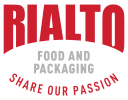The History of the Straw:
A lot of inventions by humans have been inspired by nature. Insects use the proboscis to suck nectar from flowers, a similar function to a drinking straw.
Around 2600 BC the Sumerians an ancient civilisation living in modern-day Southern Iraq used reed straws to drink beer from clay jars. Later years with the industrial revolution of the 1800s the use of rye grass straws made straws a very popular eating utensil to transfer liquid from a container to the user’s mouth.
In 1888, Marvin Stone developed and patented the paper straw. By 1890 his factory was manufacturing more straws than cigarette holders. In 1906 “Stone Straw Corporation” invented the first winding machine to speed up production and end the hand-winding process. Apparently Stone was manufacturing up to 2 million straws per day during his peak period.
During the 1930s an inventor Joseph Friedman invented the bendy straw and created the Flex-Straw Company to produce his product. These straws were for example very popular with hospitals as they allowed patients to drink while in bed.
Plastic straws were both more durable and cheaper to produce than the paper straws. Consequently during the 1960s mass production of plastic straws increased. Plastic became a popular material to manufacture a wide range of goods, according to Plastics Europe, (one of the world’s largest plastic producers) in 1959 an estimated 1.5 million tons of plastic was produced and it increased to 322 million tons of plastic in 2015.
The media exposure of plastic pollution and its negative effects on the environment paved the way for the comeback of the paper straw.
The Modern Day Paper Straw:
Over the past few years a lot of research and development has taken place to improve the design and material quality of the paper straw. A very important factor is the durability of the straw when in liquid, not to get soggy but still to maintain the compostable element to break down in landfills.
The method, paper and glue used today to manufacture paper straws are very different to the paper straw of the mid 20th century. The increased sales of paper straws are making inroads in the global drinking-straw market where plastic straws have the major market share. Currently it is estimated that Americans use 500 million drinking straws per day.
In order to curb the effects of plastic pollution several countries, cities and corporations have instated new policies regarding single use plastic items. In 2018 the EU announced the banning of plastic straws by 2021. Therefore the pressure is not only felt from the institutions but also from the environmentally conscious consumer for businesses who benefitted from plastic products to seek alternatives.
The paper straw offers a sustainable and environmentally friendly alternative to the plastic straw. Paper straws are made from naturally degradable material and decompose in a short period of time. A used paper straw thrown away will start to degrade within days and will not cause any harm to the environment when breaking down. When paper straws are composted they can be used to fertilize the soil.
Conclusion:
Multi-cup Solutions, as a well-established food and beverage packaging supplier in the South African market, made the responsible decision to add a new range of environmentally friendly products to their extensive product list. Multi-cup Solutions as a fore runner in the packaging market recognizes the paper straw as an important “Green” solution to their beverage client requirements. Multi-cup Solutions noted the high demand for paper straws in the market place and has added white and black wrapped paper straws in different sizes to the stock range.
For more information on our full range of recyclable and enviro friendly food and beverage packaging contact us on 011 058 4200.









Leave A Comment
You must be logged in to post a comment.